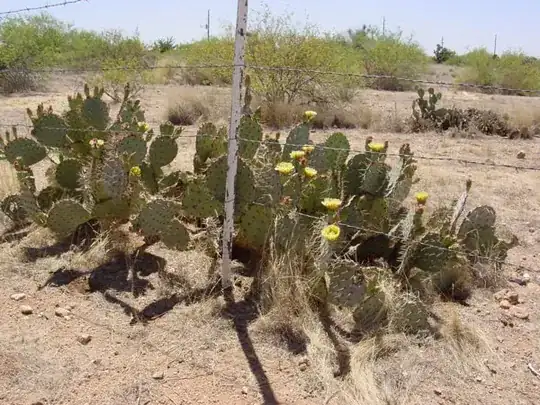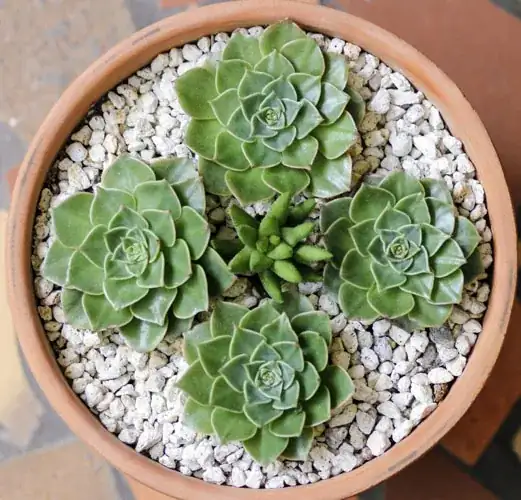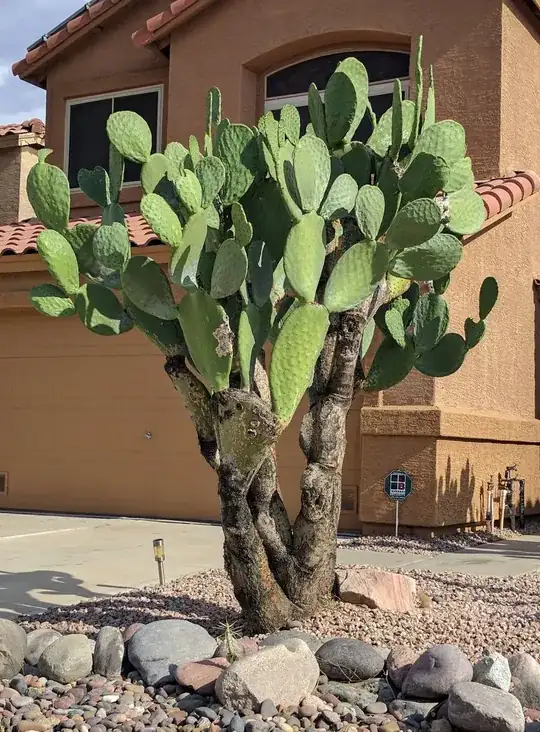Thanks to another question, we know that Opuntia can live for decades. Can they live for centuries? Rather than determining the age of a specimen, answering this positively might mean identifying one which is known to have been growing since long ago.
2 Answers
I don't know about centuries, but some species live a long time. The large species like Opuntia ficus indica develop woody stems and grow in a tree-like fashion. There are several other South American Opuntias that get very large and tree-like.
Aside from the large tree-like plants, longevity will depend on a number of variables; water, nutrition, photo-period, insects, other animals, etc.
Most small/medium Opuntias (they don't make a woody stem) either grow low to the ground and spread horizontally or they grow upright and when they get too top heavy they either fall over of pads drop off. The fallen plant or pads will then root. I saw some information that said the life-span for Opuntia englemannii (a common medium sized Opuntia) is 30 years. I have seen plenty of large dead Opuntias in my travels in habitat. O. englemannii is pictured below. Note that it is wider than it is tall. The plant to the right in back looks like one living part next to a bunch of dead plant material. Very typical, in my experience.
Cylindropuntia (Cholla-style - canes rather than pads) definitely have a limited life-span. I have seen numerous "fairy rings" where there is a ring of plants with a bunch of dead, decayed parts in the middle. The plants just keep flopping over and rooting, further widening the ring. I live in Arizona where we have lots of native and non-native Opuntias.
Pictured below is Cylindropuntia fulgida, also common in my area. I have seen these growing in rings.
This is a picture of a good sized Opuntia ficus indica near my parents house. You can clearly see the woody stem. This one has been regularly pruned. I've seen others in the Phoenix area much larger. I estimate this one to be 8-10 feet tall.
The main thing to keep in mind is that Opuntias are generally fragile plants. One of their prime methods of reproduction is to drop pieces and let them root. Some also have hooked spines, presumably to attach itself to passing animals to be deposited somewhere else.
Hopefully this is useful to you. Like most questions about cactus, the answer is generally "it depends".
- 3,218
- 6
- 12
Indefinitely, as long as their habitat isn't depleted (extensive drought/erosion etc), and they don't die from pests/disease, or other causes of death (low temperatures, harvesting, habitat destruction, etc).
With cacti, there isn't a genetic lifespan, but it's unlikely for one plant to live for more than 1 or 2 hundred years, due to the above mentioned plights. And since cacti grow terminally, sometimes a plant will break off under it's own weight after a time, and although it's likely to regrow from the base, or fallen stems that root into the ground, that doesn't always happen.
With the sprawling ones, their genetic age doesn't even reach very high as they root along the joints, and the old sections die off, constantly renewing the growth.
- 51,627
- 21
- 115
- 320


